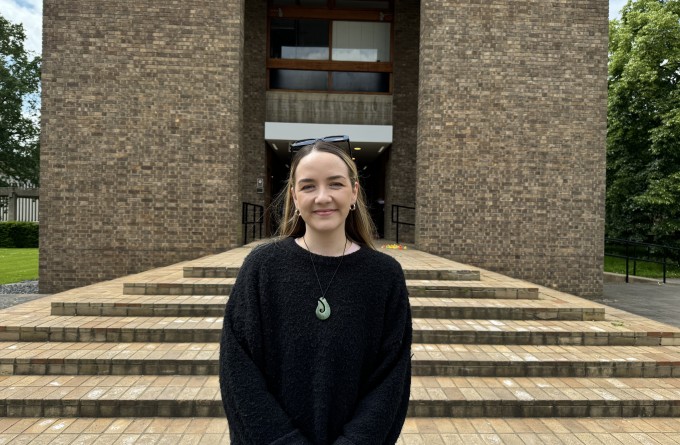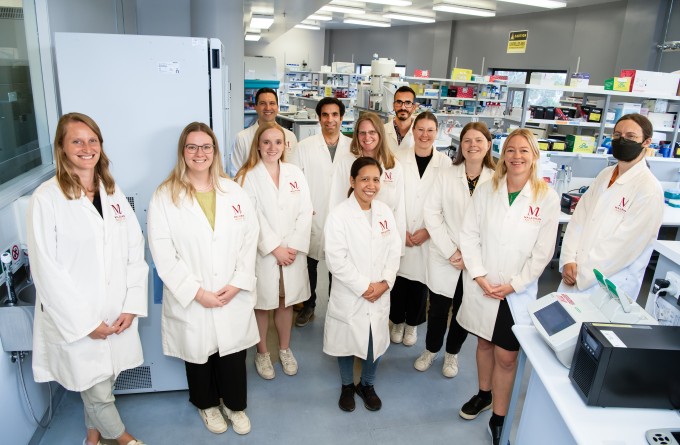27 January 2022
New Zealand’s ability to make its own mRNA vaccines like the Pfizer COVID-19 vaccine is a step closer with the arrival of cutting-edge nanoparticle technology, the first of its kind in New Zealand.

The NanoAssemblr Blaze is designed to produce lipid nanoparticles to encapsulate mRNA to safely deliver it to cells – the scientific breakthrough that thrust mRNA vaccines to the fore at the start of the COVID-19 pandemic.
Funded by private donors to the Malaghan Institute of Medical Research, the $1m Blaze landed in Timaru this month where it is being installed at South Pacific Sera, a biotech that is part of Vaccine Alliance Aotearoa New Zealand – Ohu Kaupare Huaketo (VAANZ).
Professor Graham Le Gros, Director of the Malaghan Institute and VAANZ Programme Director, says the arrival of the technology marks a significant step towards New Zealand producing its own mRNA vaccines and other RNA therapeutics in the future.
“The Blaze will allow us to bridge the gap between lab research and clinical development. It is just the start of the RNA nanomedicine pipeline we envisage for New Zealand – to translate mRNA and RNA research and development into homegrown vaccines and therapeutics.”

The NanoAssemblr Blaze - credit Precision Nanosystems
He says having an end-to-end mRNA platform in New Zealand would provide vaccine security and enable a rapid response to future pandemics, something VAANZ has been focused on since it was first funded by the Government in 2020 to lead COVID-19 vaccine research in Zealand.
“VAANZ’s goal is to build New Zealand’s capability and platforms for vaccine development to meet the current and future demands of infectious disease threats.”
South Pacific Sera Production Director Dr William Rolleston says the Blaze will allow South Pacific Sera to develop the process of encapsulating mRNA vaccines, a critical component for mRNA vaccine manufacture.
“mRNA encapsulation adds new capability to South Pacific Sera’s GMP vaccine manufacturing infrastructure. With the Blaze installed and ready to go we will have the opportunity to use our knowledge and experience to develop local GMP manufacturing solutions to meet the challenge of mRNA vaccine production.
“COVID-19 vaccines are just the tip of the iceberg for what this technology offers, with enormous potential for therapeutic development not just for human medicine but also across the primary sector.”
Professor Le Gros says the Blaze will first be put to use on a pilot mRNA COVID-19 vaccine VAANZ has under development, based on its recombinant spike protein vaccine candidate that is being developed in parallel and is currently completing preclinical development.
“VAANZ’s aim is to take this COVID-19 mRNA vaccine candidate into human clinical trials, to develop local capability and inform how we build New Zealand’s mRNA infrastructure.
“This is a real opportunity to build the know-how and infrastructure for future mRNA vaccine development and GMP production capacity in New Zealand. It’s about laying the foundations so that we’re ready and responsive for future pandemics.”
Related articles

As easy as breathing: the future of vaccines
31 October 2024

As easy as breathing: the future of vaccines
31 October 2024

Malaghan RNA researcher named KiwiNet Emerging Innovator
4 September 2024

Fever: too hot to handle or the body's first line of defence?
22 August 2024

Rejuvenating the ageing immune system
17 July 2024

Hugh Green Technology Centre: driving innovation and support of medical research
12 July 2024
